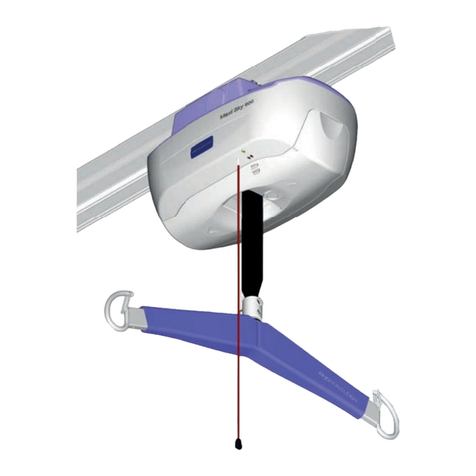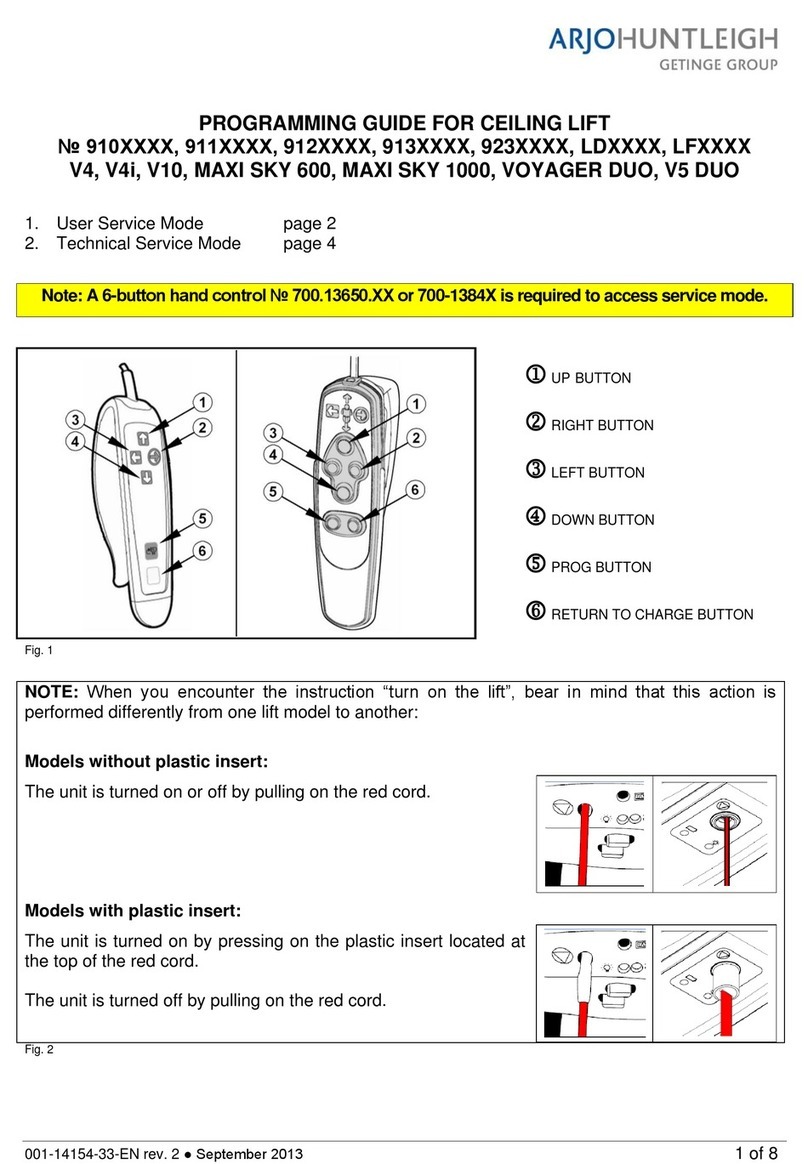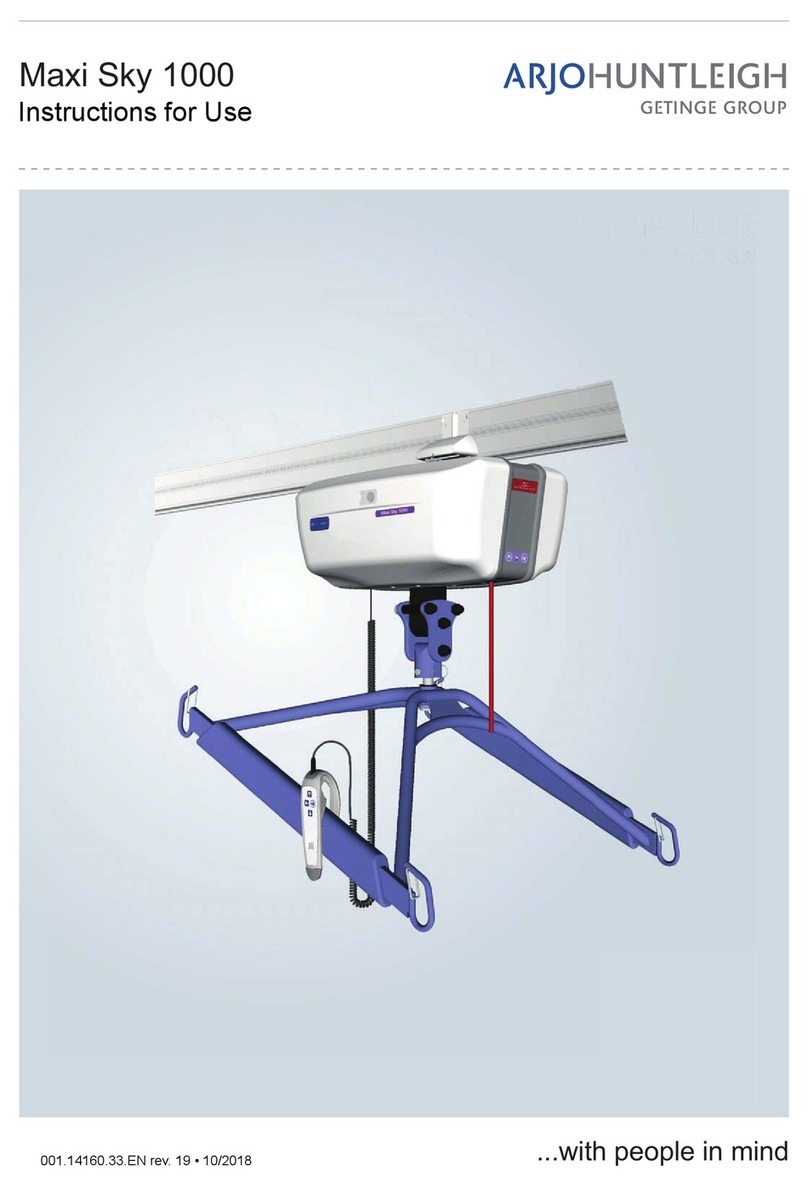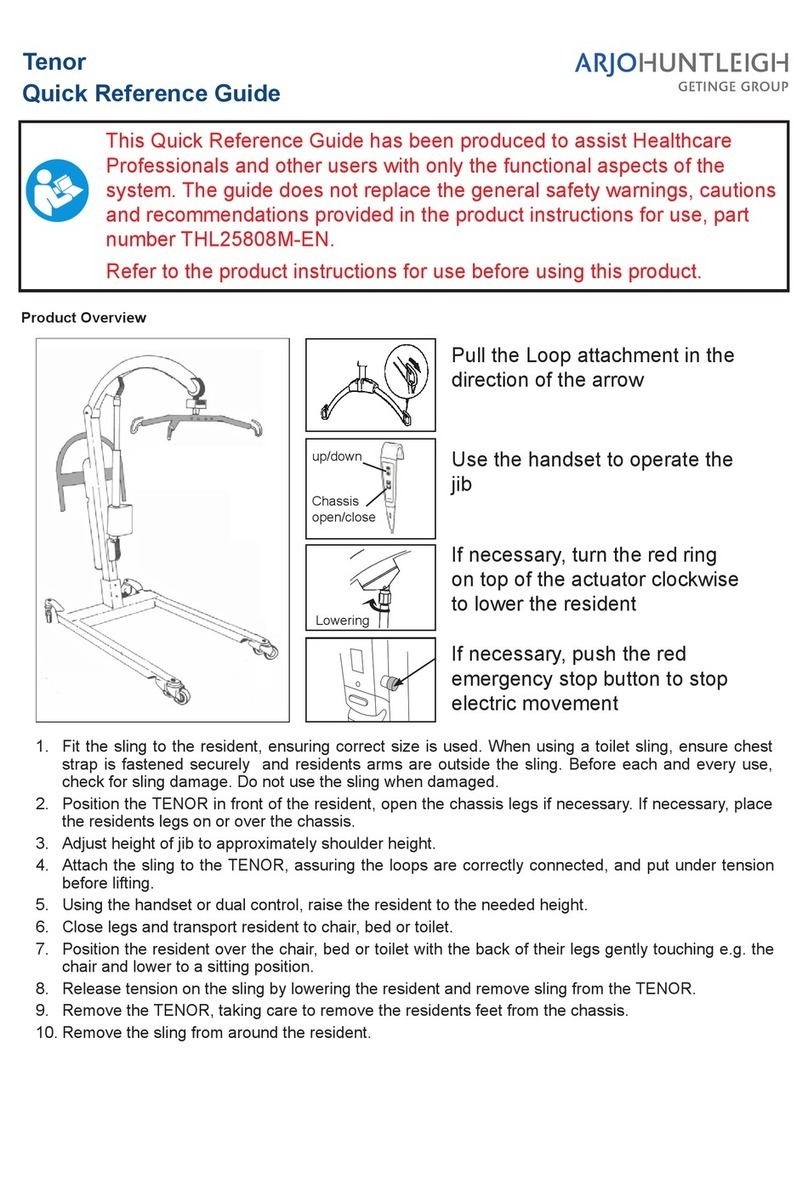
6
CONTROLS AND FUNCTIONS
Control Handset: Press the appropriate button
on the control handset to raise / lower the jib
and to move the spreader bar. A small direction
arrow is printed next to each button for func-
tion identification (See Fig. 2).
If pressure is released during any function,
powered motion will stop immediately. Do not
drop the handset into water, e.g. bath.
When not in use, the handset can be kept ready
for use by hooking it over the loop at the rear of
the mast.
Dual control switch: The raising / lowering of
the jib can also be controlled from this switch,
situated on the top of the electronics / battery
compartment on the mast. Arrows on the
switch are for function identification (See inset
to Fig. 1). This switch will function, even if the
handset cable has been unplugged.
Emergency Stop Button (red): If, in an
emergency, you have to immediately stop any
powered movement (other than by releasing
pressure on the button on the handset) press the
emergency stop button situated on the right
hand side of the electronics / battery compart-
ment on the mast (Fig. 1). Once the Emergency
Stop button has been operated, it must be reset
by turning the red cap until it pops out. Now
the TENOR can be operated again.
Power on / Reset button (green) : Located
on the top control panel (Fig. 1). Press this
button to turn on power to the TENOR. Also
used to reset if the automatic overload fuse has
operated (indicated by the button projecting
outwards slightly). If the fuse has operated and,
once reset, operates again, withdraw the lifter
from use and contact ArjoHuntleigh or their
appointed distributor.
Power off button (red) : Located on the top
control panel (Fig. 1). Press this button to turn
off power to the TENOR.
Automatic cut out: If the lift is accidentally
overloaded, trying to lift a resident heavier than
permitted, an automatic ‘cut out’ operates to
prevent the lift lifting a load in excess of one
and a half a times the maximum allowed load.
The lift motion will stop automatically.
System failure lower override: In case of
control handset / dual switch malfunctioning,
with a resident still supported by the sling, the
lowering process can be continued using the
system failure lower override, situated on the
lift actuator tube (See Figs. 1 & 3).
To use this function, turn the red ring on top of
the motor / actuator of the TENOR clockwise,
using the resident’s own weight to enable the
mast to slowly lower. To stop lowering, simply
stop turning the ring. Only use this function in
the event of normal control failure. Do not use
it for normal function lowering.
WARNING
Do not press two control buttons
simultaneously as this may cause
unintended movement of the hoist.
‘Lower’ button
‘Raise’ button
Fig. 2
Chassis legs
‘Open’ button Chassis legs
‘Close’ button
Product description































